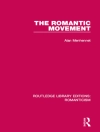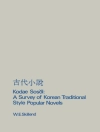Literature that was self-published and informally circulated in the former Soviet Union in order to evade censorship, in addition to prosecution of its authors, came to be known as samizdat. Vasilii Aksenov, Andrei Bitov, and Venedikt Erofeev were among its most acclaimed practitioners. In her innovative study, Ann Komaromi uses their work to argue for a far more sophisticated understanding of the phenomenon of samizdat, showing how the material circumstances of its creation and dissemination exercised a profound influence on the very idea of dissidence. When a text comes to life as samizdat, it necessarily reconfigures the relationship between author and reader. Using archival research to fully illustrate samizdat s social and historical context, Komaromi arrives at a more nuanced theoretical position that breaks down the opposition between the autonomous work of art and direct political engagement. The similarities between samizdat and digital culture give her formulation of dissident subjectivity particular contemporary relevance.
Ann Komaromi
Uncensored [PDF ebook]
Samizdat Novels and the Quest for Autonomy in Soviet Dissidence
Uncensored [PDF ebook]
Samizdat Novels and the Quest for Autonomy in Soviet Dissidence
قم بشراء هذا الكتاب الإلكتروني واحصل على كتاب آخر مجانًا!
لغة الإنجليزية ● شكل PDF ● ISBN 9780810131248 ● محرر Gary Saul Morson ● الناشر Northwestern University Press ● نشرت 2015 ● للتحميل 3 مرات ● دقة EUR ● هوية شخصية 7165150 ● حماية النسخ Adobe DRM
يتطلب قارئ الكتاب الاليكتروني قادرة DRM












